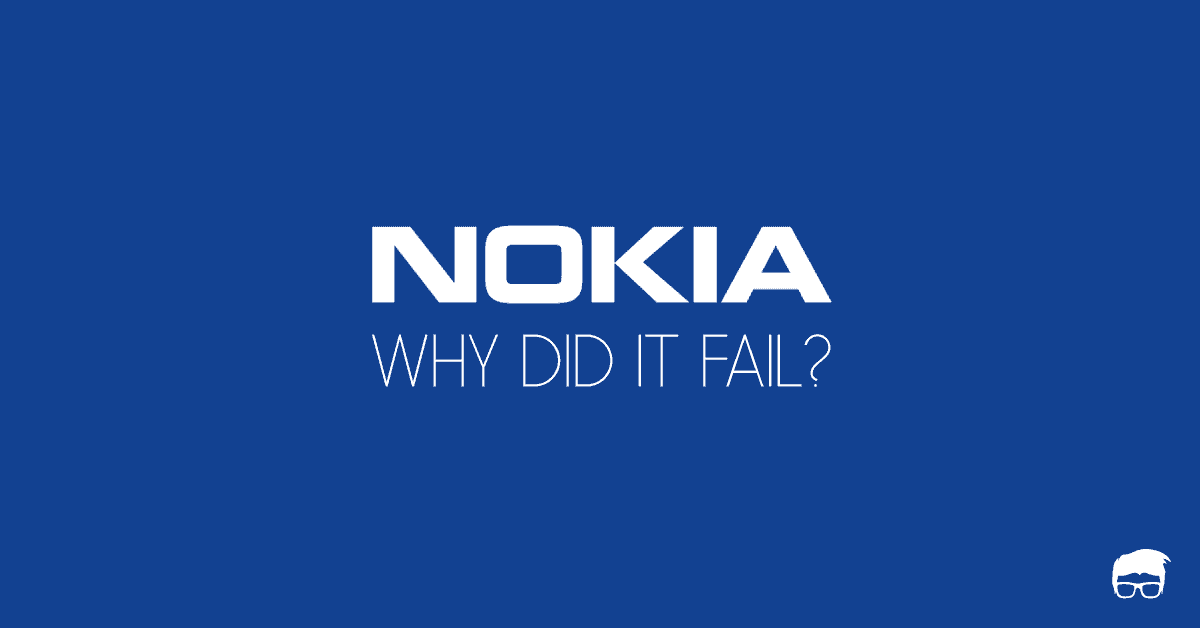Kodak was a well-known photography company that has almost vanished from people’s minds. It used to be the biggest name in the photography industry and even played a big part in making photography more accessible from just being a rich person’s hobby.
Kodak was a pioneer in the film and photography industry and its innovations have helped create newer technologies that are even used today.
Let’s take a look at the interesting history of Kodak and how, at one point, even became synonymous with the act of taking a photo.
History Of Kodak
The Eastman Kodak Company or, Kodak as it was commonly known, was started in 1888 by George Eastman in New York as a photography, film and imaging company.
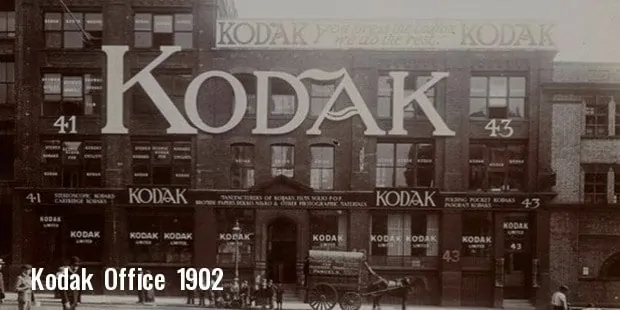
During its early days, taking photos was very cumbersome – you needed expensive and heavy camera equipment which used bulky plates to capture images and operating it alone was a difficult job. Moreover, the plates had to be developed as soon as they were exposed to take a photograph to obtain a useable image. This made photography was more of a niche hobby or a funded project and out of reach for many.
Kodak with its motto – “You press the button, we do the rest” – set out to make photography more accessible with his company Kodak.
And it did just that.
Kodak released its first product to the public – the Kodak Camera – in 1888, the same year the company was created.
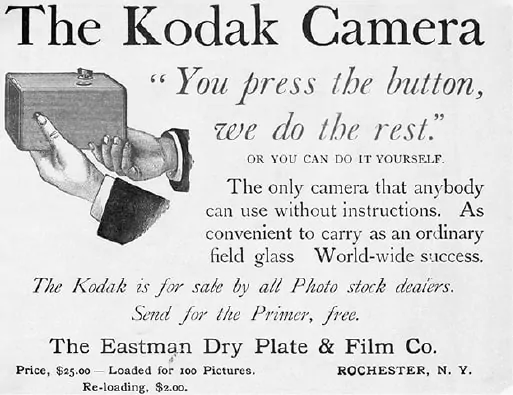
The camera was easy to use and carry around – something that mosts cameras back then were not. But here’s the most distinguishing factor of Kodak’s products – the cameras came pre-installed with a photo film roll that could shoot 100 stills and Kodak offered to take back, develop and print the film rolls for a small fee. All the customers had to do was to send the camera with the film after taking pics.
This is a prime example of the “razor and blade” business model where Kodak sold the cameras for cheap to get it into as many hands as possible and planned to make back in the sales of its consumables such as film rolls and services.
This made cameras cheap enough for the public to start getting them and the ease of development saw many flock to it in droves. It allowed the general public to consider owning a camera and taking photos.
This, in turn, snowballed into more sales and revenue for Kodak and was a win-win for all.
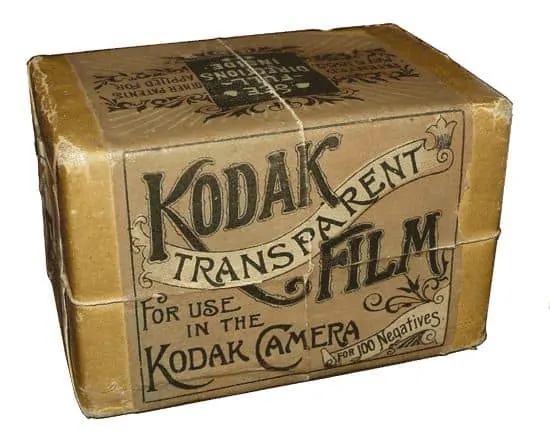
Not before long, Kodak started including the charges of developing and printing film rolls into their pricing. This further increased the profits and also locked the customer into the Kodak ecosystem since they had to only go to Kodak to get their rolls developed.
Due to this, Kodak grew rapidly and this growth was further boosted with the subsequent launch of the $1 camera, The Brownie.
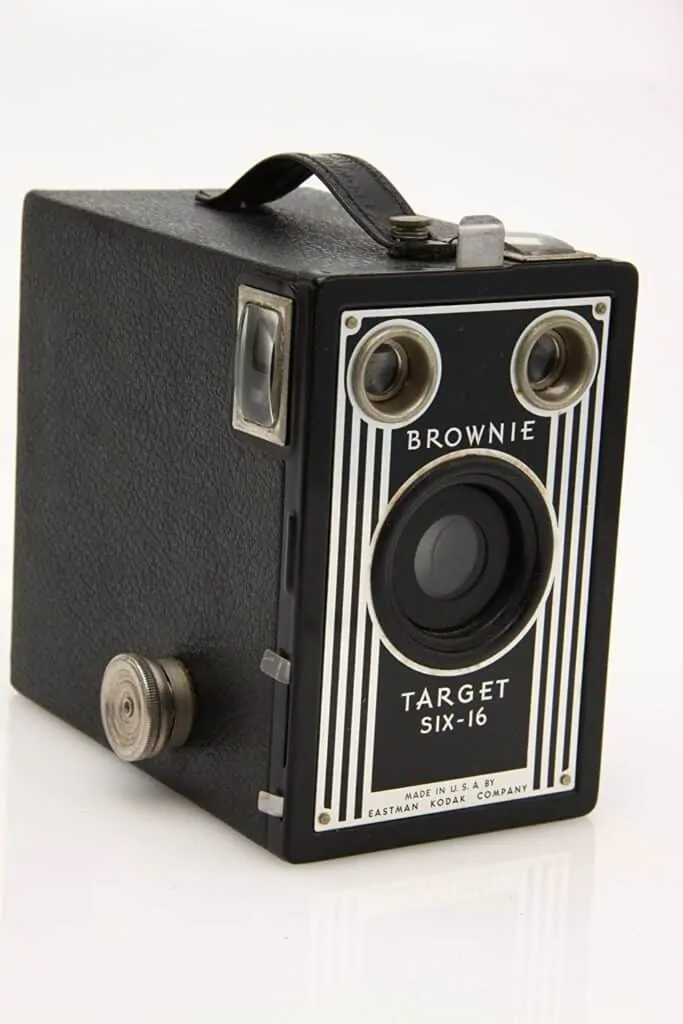
Kodachrome – Let there be colour!
Kodak did not halt and rest on their early successes and kept on innovating. In 1935, Kodak invented Kodachrome, the world’s first colour film.
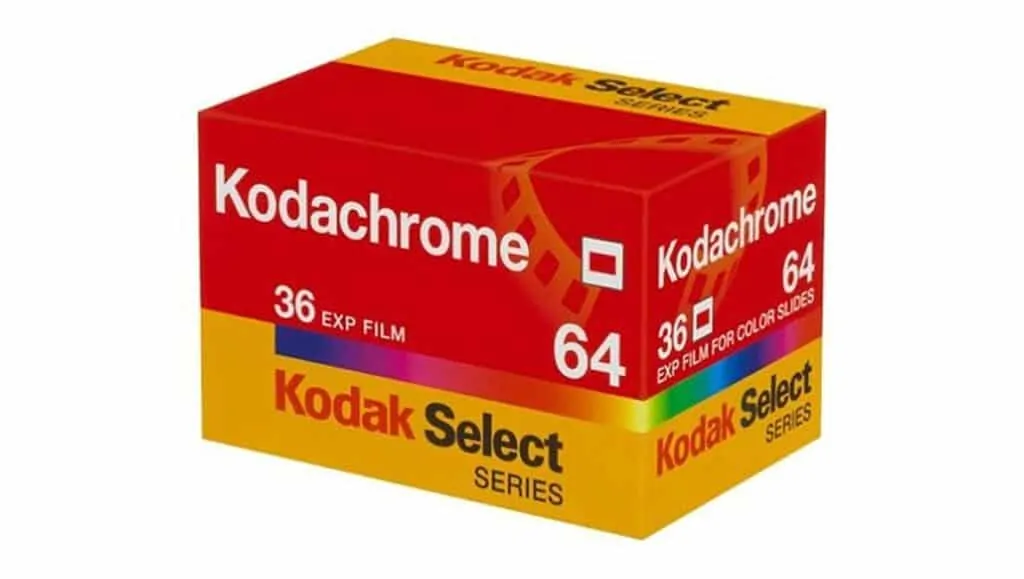
This went on to become one of Kodak’s most popular and longest selling products in its history. It was only in 2009, 74 years after it was first introduced, that Kodak stopped manufacturing the Kodachrome film rolls. Kodak was consistently involved in helping pioneer motion pictures and videos and by the 1960s, Kodak’s sales grew into the billion-dollar range.
Here’s a list of significant achievements and innovations that Kodak made over the following years –
- In 1961, the company launched it’s famous “Kodak moment” marketing campaign and people soon started associating it with taking photos and capturing special moments.

- In 1962, Kodak reached $1 billion in sales.
- In 1963, Kodak launched the Instamatic camera – a point-and-shoot camera – which became popular due to its easy to load and use nature.
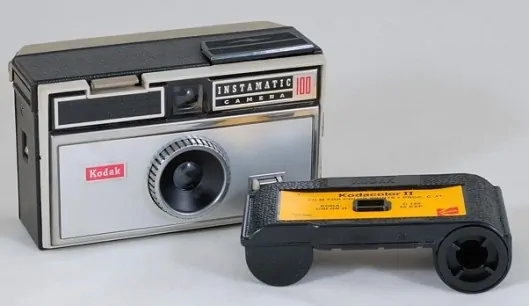
- In 1966, Kodak’s camera and film technology were used to capture the first-ever photo of the planet Earth taken from space.
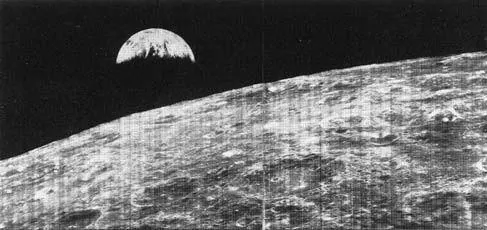
- Also during the same year, Kodak’s sales had reached upwards of $2 billion.
- It was George Eastman and Thomas Edison who helped develop the ever-popular 35mm film that is used for photography and motion pictures to date.
- The very first X-Ray was observed on a Kodak film leading to the discovery and usefulness of X-Rays in general by Wilhelm Röntgen.
In the 70s, Kodak created something that not many associate Kodak with – the digital camera.
Pioneer Of Digital Cameras
The first digital camera to be invented was by Kodak. In 1975, Steve Sasson, a Kodak engineer, created the first charge-coupled device (CCD) image sensor (0.1 megapixels in size) and used it to put together the world’s first digital camera from the parts lying around in Kodak’s factory.

Here are a few facts about the world’s first digital camera – The camera needed 23 seconds to capture a single black and white photo and used cassette tapes as its storage medium.
The following year, Kodak researcher Bryce Bayer invented the Bayer colour filter array – a grid of Red, Green and Blue (RGB) colour filters that allowed the image sensor to light intensity (brightness) along with light wavelengths (colour). The Bayer filter is considered to be a very important invention since it helps cameras take colour photos and is still used in nearly all modern digital sensors.
The same year, Kodak had become the biggest player in the photography as well as the film industry. It was estimated that by 1976, Kodak held over 85% and 90% of camera and film market share respectively.
In 1979, Kodak researchers created the first efficient organic light-emitting diodes (OLED). In 1981, Kodak reached $10 billion in sales – right around the same time as when the digital cameras were starting to gain popularity among the general consumers.
The Decline of Kodak
During the early 1980s, Kodak’s competitors were starting to catch up to it in terms of price and features. The industry was starting to shift more towards the digital counterparts and less towards film rolls and the analogue cameras.
In 1984, consumers were starting to prefer Fujifilm’s products over Kodak’s. Fujifilm was a Japanese competitor and their camera rolls were usually around 20% cheaper while having the same quality as that of Kodak’s rolls.
In 1991, Kodak developed the world’s first digital SLR (DSLR) camera – the one that uses a mirror and prism system to allow the photographer to see as if viewing “through” the camera lens to know what you are capturing.
In 1999, Kodak teamed up with Sanyo and produced the first OLED displays. Kodak even used the OLED displays as viewfinder displays on their digital cameras.
Kodak, over the entirety of its operations, made most of its money from film rolls and felt that it needed to continue and preserve the sales of its film rolls. So even when digital cameras – that Kodak helped invent – gained popularity, Kodak was still focussing on promoting its analogue products such as film rolls.
While Kodak had a great run so far, things started going downhill during the 2000s. In 2004, Kodak saw its profits dip even though its sales were at an all-time high. By the time Kodak started focusing on digital products – which it did by releasing a slew of digital cameras and printers print the images taken from the digital cameras – it was already too late to capture users who had moved on to other brands.
Though Kodak offered digital cameras, people still mostly associated Kodak with film rolls and analogue cameras.
Kodak’s efforts at turning around were not fruitful and it slow had to cut down on its operations. In 2009, Kodak sold its OLED technology to LG Corporation.
In 2012, after almost operating on a high note for over 130 years, Kodak filed for bankruptcy and announced that it would be stopping the production of its digital cameras, films rolls (few still remain in production) and digital picture frames.
Kodak In 2020s
Kodak, after coming back from bankruptcy, has started focusing more on providing digital prints, touch screens, and printers while continuing to support analogue film rolls by manufacturing them as well as the chemicals required for the development of the said rolls.
Because of its long list of patents, its printers Kodak was able to survive in the highly competitive printer market. Though not being able to make a lot of profit with the razor-thin profit margins, Kodak still managed to offer quality printers and have even become the staple in offices around the world.
Recently, Kodak sold its chemical business to a Chinese corporation but has managed to retain its film division. While it might seem like a tragic downfall to the once well-known giant, things seem to be looking their way with the recent rise in the sales of “still film rolls” due to the revived attention of shooting on an analogue camera instead of the digital one.
Go On, Tell Us What You Think!
Did we miss something? Come on! Tell us what you think about our article on History of Kodak in the comments section.

Started out to become a developer but felt at home in the home of startups. The journey started from a single novel. Been an entrepreneur since schooling days. Interested in coding, reading and movies.


![What Is A Cryptoasset? Types Of Cryptoassets [Ultimate Guide] cryptoassets](https://www.feedough.com/wp-content/uploads/2018/03/cryptoassets-02.webp)



